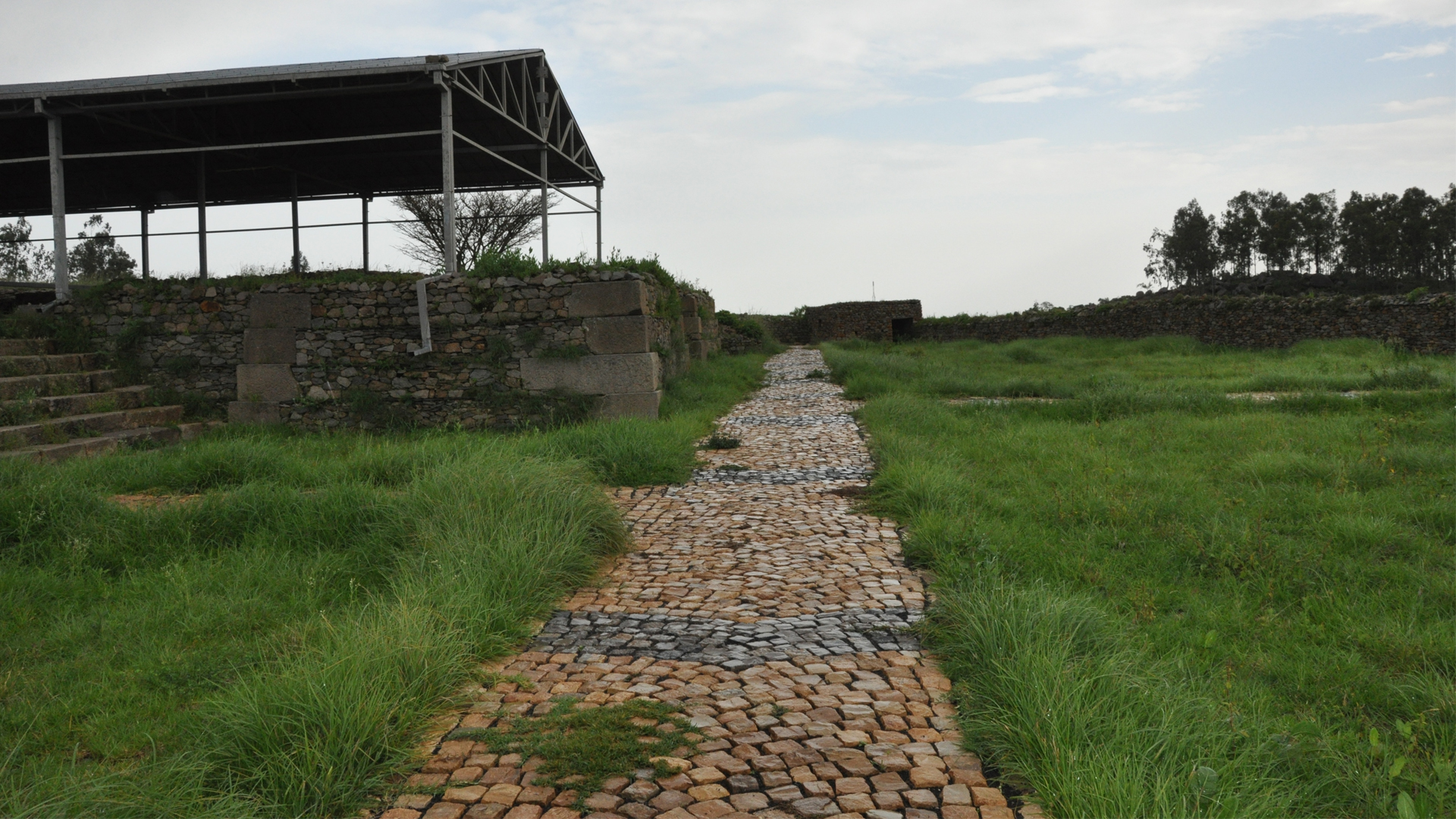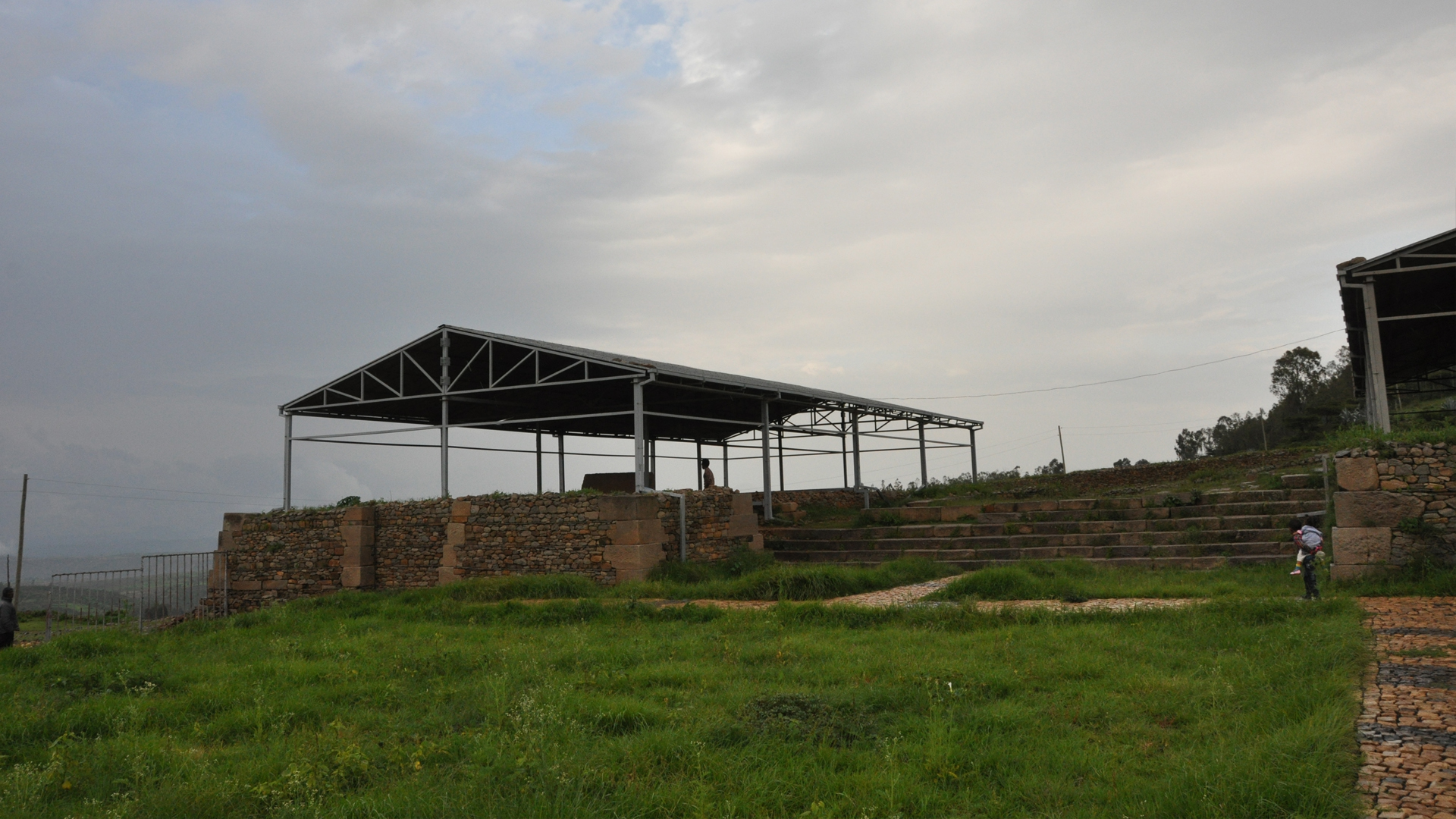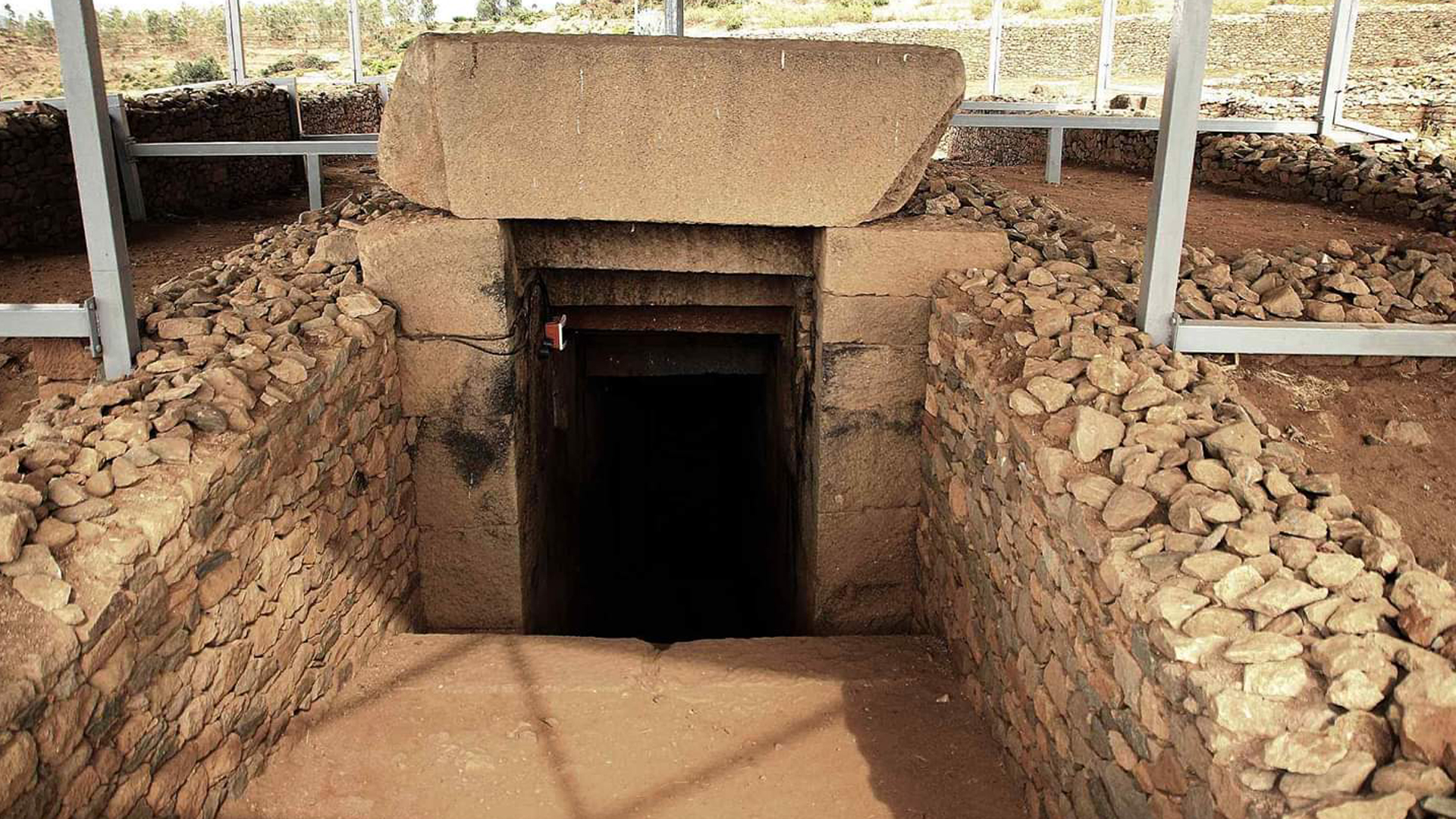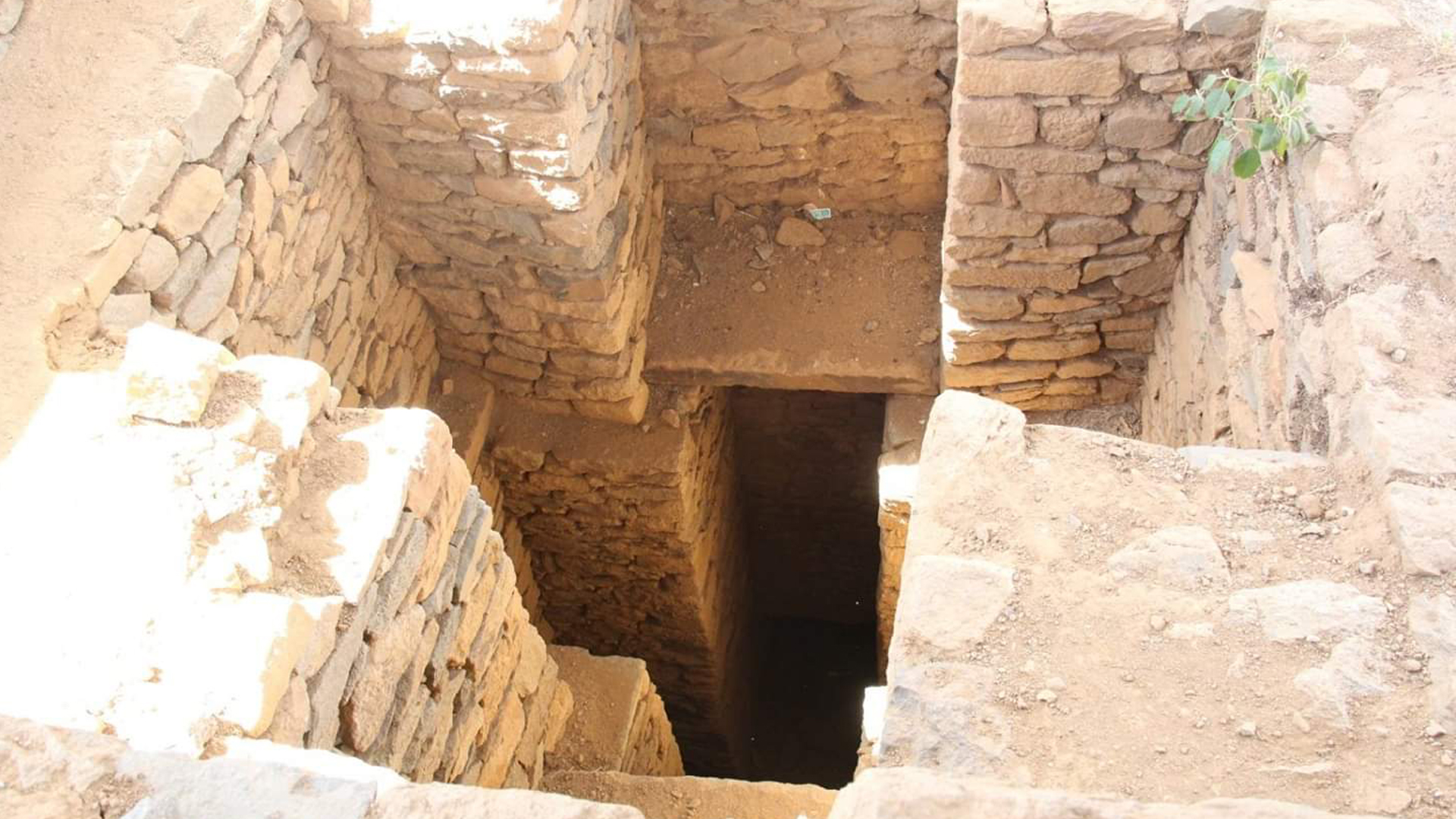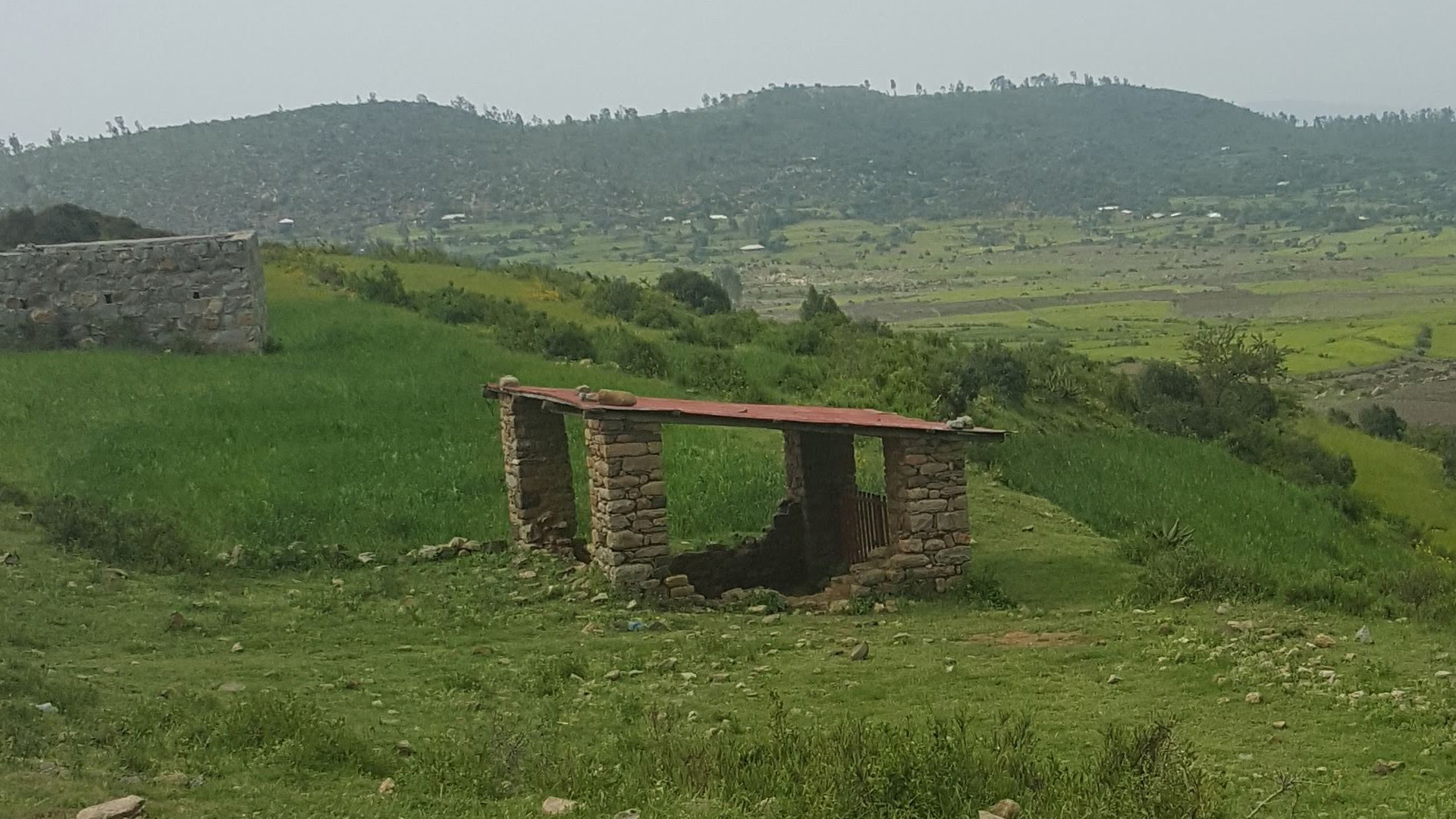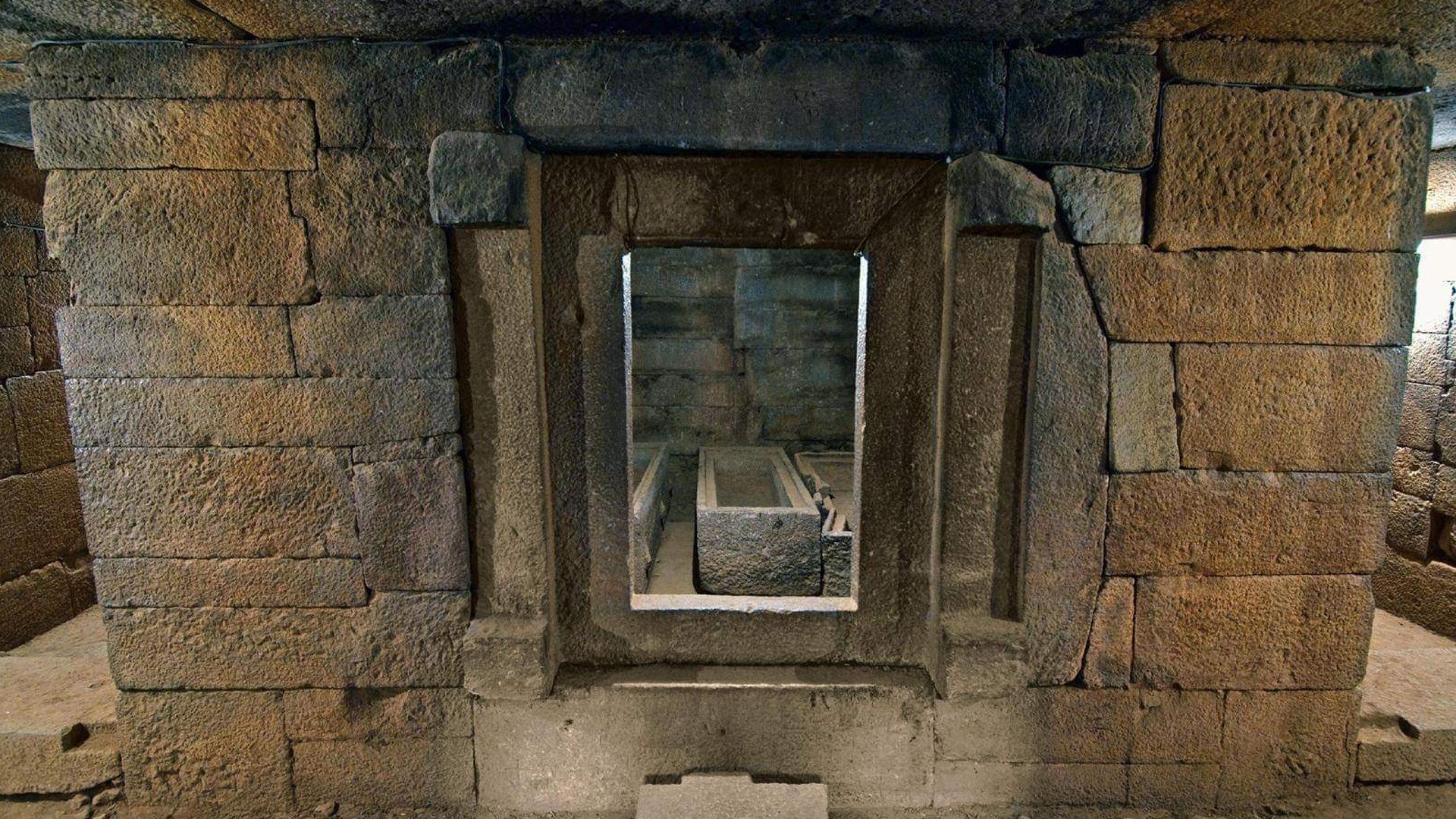Kaleb (Ge’ez: ካሌብ), also known as Saint Elesbaan, was King of Axum, which was situated in Tigrai (modern-day Eritrea and Ethiopia).
2km up a gentle slope northeast of the Stelae Field and offering views of the jagged mountains of Adwa are these two tombs of the 6th-century King Kaleb and his son, King Gebremeskel. Although the twin tombs’ architecture resembles the Tomb of the False Door, they show more sophistication, using irregular-shaped, self-locking stones that don’t require iron clamps.

The Gebremeskel (south) tomb is the most refined. The precision of the joints between its stones is at a level unseen anywhere else in Axum. The tomb consists of one chamber and five rooms, with one boasting an exceptionally finely carved portal leading into it. Inside that room are three sarcophagi, one adorned with a cross similar to Christian crosses found on Axumite coins. This points towards an age around the 6th century AD, which, as seldom happens, corresponds with local tradition…though the rest of the story has Gebremeskel buried at Debre Damo.
Like Gebremeskel’s tomb, King Kaleb’s is accessed via a long straight stairway down to underground. Inside this underground, you’ll notice the stones are larger, more angular and less precisely joined. Of those who attribute the making of the tomb to Kaleb, few accept that he was actually buried here. The common theory is that his body lies at Abba Pentalewon monastery, where he lived after abdicating his throne. The tomb’s unfinished state fits with the theory.
Local rumour has it that there’s a secret tunnel leading from here to the Red Sea.
Above ground, a kind of raised courtyard combines the two tombs. Some scholars have suggested that two parallel churches with a basilica plan lay here, probably postdating the tombs.
Source:

